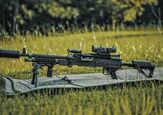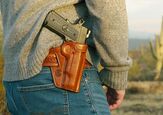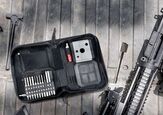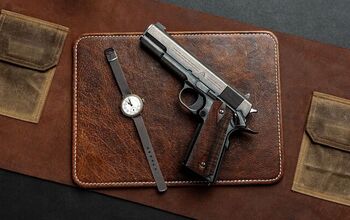Concealed Carry Corner: How To Conceal In An ORV

Welcome back to another edition of Concealed Carry Corner. Last week, we talked about how small guns aren’t always the best option when carrying them daily. If you happened to miss that article, be sure to click the link here for more information. This week, I wanted to look at another topic that can apply to a lot more people than just the offroad community. Whether it’s riding four-wheelers, side-by-sides or jeeps, the idea of carrying a concealed firearm while you enjoy the great outdoors makes a lot more sense than it initially sounds. Let’s take a closer look at how to conceal in an ORV.
Concealed Carry Corner @ TFB:
Why Carry When Offroading
Some of you may be wondering why it is important to carry a concealed firearm while out on trails. It is important to know your local and state laws when it comes to firearms on various properties. Federal land and parks can be tricky so know the trail locations and if you’re allowed to carry before leaving on your trip. Some of you may be asking yourself why carry when riding a four-wheeler, ORV, or offroad vehicle and that can be a fair question. Obviously, there’s a risk of having it fall off your body while riding and if you’re moving you can’t exactly stop a threat.
The truth is most trails are in remote locations and depending on what part of the country you’re in, there can be even bigger threats than people lurking out in the woods. Whether it’s mountain lions, bears or wolves, there are all kinds of predators out there that can cause unexpected issues where people can get hurt. Being in a remote rural area is even more motivation to take self-protection seriously because the only person you can rely on is yourself. There are all kinds of videos online from dangerous moose encounters, bears attacking and mountain lions stalking people on trails. It’s important to think about and take into consideration if you enjoy offroad motorsports.
OWB VS IWB
One of the biggest topics to look at when talking about carrying when in an ORV. Some people think carrying an outside-the-waistband holster with a cover garment works best while others prefer it closer to their body with an inside-the-waistband holster. This is really a personal choice but both options have their positives. Outside waistband holsters offer more flexibility when moving around on an ORV but without retention or any sort of level two or three locking holsters, can have the risk of coming off your body in various positions.
Inside the waistband, holsters offer more retention typically with your belt applying pressure onto your holster which helps keep it in place. The issue with IWB-style holsters when riding ORVs is the fact after a few hours, the pistol digging into your side or front can become extremely uncomfortable. With the right placement and with enough practice it won’t be as big of an issue but trust me, when you’re in the middle of nowhere and your gun starts digging into your side, it can make for a really long day.
The best way I’ve found to carry is in an outside-the-waistband holster like a Safariland-style holster where it takes a button to release the gun. They may not be as fast as other options from the draw but your gun is 100% secure compared to other options. The worst I have found so far is an outside-the-waistband holster made out of leather with no strap. I’ve carried my P226 a few times like this and if you hit a bump hard at all, the gun will start shifting and moving unintentionally.
Retention Is Key
When it comes to carrying on an ORV, the number one most important factor is how well much retention you have in your holster. When I’m looking for a solid holster with a good amount of retention, I always prefer Kydex over leather. New leather holsters offer great retention but once they start to break in, there can be movement in the holster, and hitting bumps and going around corners isn’t ideal for a holster with slight play in it. Kydex can be tightened down to offer great retention but may be challenging to get out of the holster.
I prefer a level 2 or level 3 holster with a hood and button to release the pistol. If you’re in a city coffee shop, having a level two or three holster doesn’t make sense but when you’re going 35mph down a bumpy dirt trail, it’s important to have that extra retention to keep that firearm as secure as possible. A good Kydex IWB holster or belt mounted outside the waistband holster with solid retention will be enough to secure your firearm out on the trail.
Overall Thoughts
ORV riding on a dirt bike, four-wheeler, side by side or overland vehicle can be a fantastic way to unplug from society and enjoy the outdoors. Carrying a firearm is never a bad idea for peace of mind when it comes to personal safety. What do you guys typically carry if you go out into the wild? Various gun choices depend on if your area has predators or not so I’d love to hear your thoughts down in the comments below. If you have questions about carrying concealed or firearms in general, feel free to shoot me a message on Instagram @fridgeoperator. Stay safe out there and we will see you next week for another edition of Concealed Carry Corner.
TFB’s Concealed Carry Corner is brought to you by GLOCK

I'm an avid shooter and love educating whether it's at my job or in the shooting community. I'm an average joe that really loves talking with other people about firearms and other passions.I'm active on Instagram on @fridgeoperator.
More by Matt E






















![[SHOT 2025] ZEV Technologies Folding Defensive Platform (FDP)](https://cdn-fastly.thefirearmblog.com/media/2025/01/24/19471/shot-2025-zev-technologies-folding-defensive-platform-fdp.jpg?size=350x220)



![[SHOT 2025] Prototype Firearms and Accessories of Strike Industries](https://cdn-fastly.thefirearmblog.com/media/2025/01/24/02151/shot-2025-prototype-firearms-and-accessories-of-strike-industries.jpg?size=350x220)



Comments
Join the conversation
When off roading in 2, 3, and 4 Wheelers I always carried a 1911 in a Galco Miami Classic over the shoulder rig with 2 spare mags. This was in the 70’s when I was young and spent more time in the woods than at home. Depending on the areas I was exploring I also had an M-1 Carbine in a scabbard mounted on the bikes or Jeep.
Whatever holster, if you're doing the sandy, gritty desert thing put it in a big Ziploc and practice firing through it.